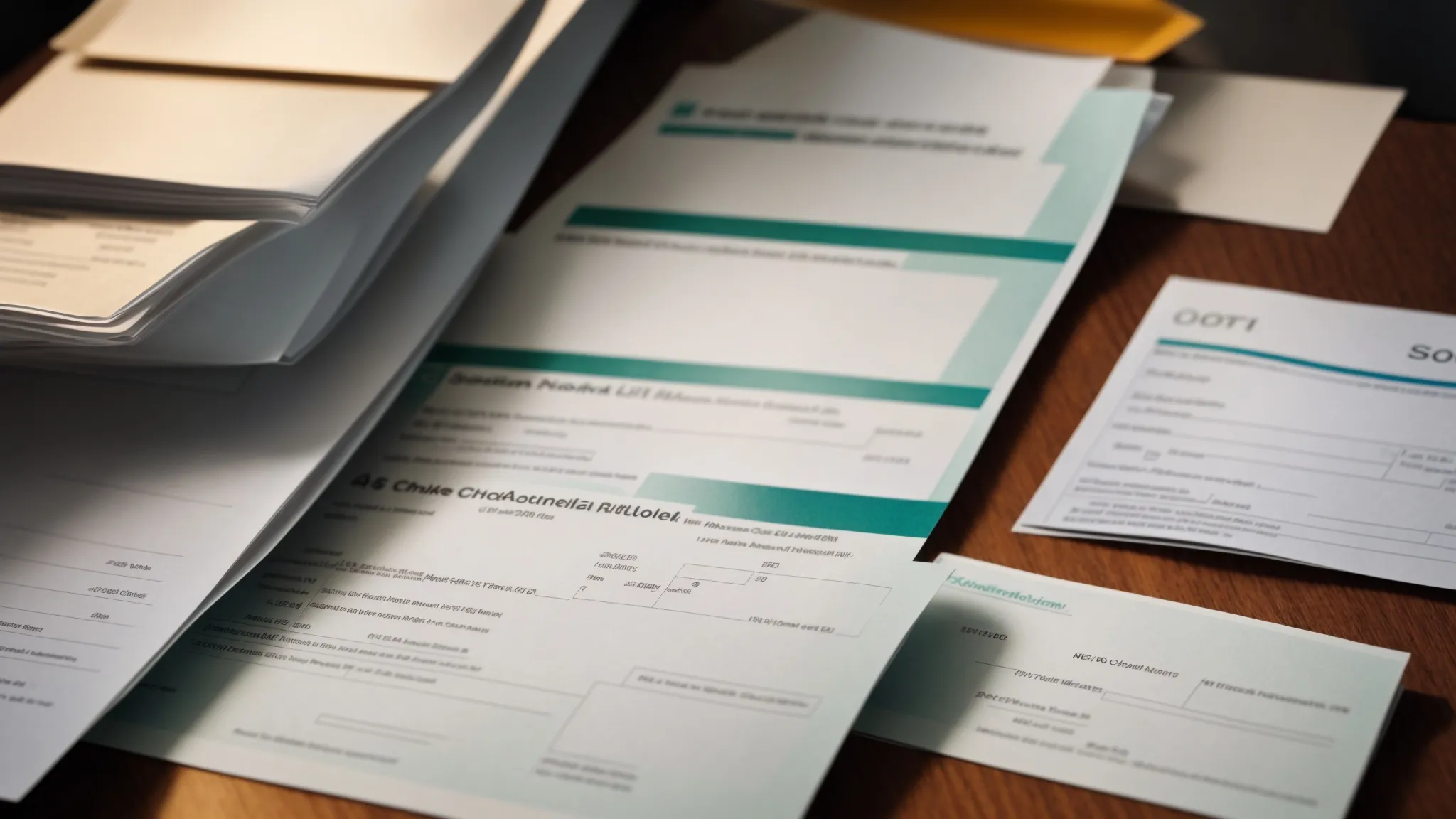Are you tired of paying more for cheques than necessary? Understanding minimum order quantities (MOQs) is key to managing your cheque costs effectively. This article will explore how MOQs relate to cheque pricing, the specific quantities that can impact your expenses, and strategies to navigate them. By the end of this read, you’ll gain insights on maximizing your visibility with vendors and reducing costs while ensuring your cheques have a good shelf life. Tackling these common pain points will help you make informed decisions at the point of sale, ultimately saving your business money.
What Are Minimum Order Quantities and How Do They Relate to Cheque Costs?

Minimum order quantities (MOQs) are crucial in understanding the economics of cheque printing for business transactions. These quantities often influence the negotiation process and overall costs when acquiring cheques. By analyzing the economic order quantity, businesses can gain insights into how MOQs affect pricing, ensuring they make informed choices that align with their needs.
This section will explore the significance of MOQs in financial transactions and the integral role cheques play in maintaining efficient operations. The practical insights provided will emphasize the importance of informed decision-making when managing cheque orders.
Defining Minimum Order Quantities in Financial Transactions
Minimum order quantities (MOQs) represent the smallest number of cheques a business can order, effectively influencing cash flow and inventory management. By opting for bulk purchasing of cheques, businesses can often secure reduced prices per unit, minimizing the financial risk associated with procurement. This alignment with bookkeeping practices supports more efficient turnover and helps to maintain a steady flow of financial transactions.
Understanding MOQs is essential for businesses aiming to streamline their cheque ordering process. When businesses commit to larger quantities, they not only save on costs but also ensure they have sufficient stock to meet operational needs. This strategic approach can enhance efficiency and provide peace of mind, allowing businesses to focus on core activities without frequent interruptions in cheque availability.
The Role of Cheques in Business Transactions
Cheques serve as a vital resource in business transactions, acting as a secure method for transferring cash between parties. By utilizing cheques as a form of payment, businesses can manage their assets effectively while ensuring a paper trail for audit purposes. This not only aids in cash flow management but also strengthens the relationship between businesses and their suppliers by fostering trust and reliability in financial dealings.
The carrying costs associated with cheques, such as storage and processing, can be minimized through strategic purchasing based on minimum order quantities. When businesses order cheques in larger quantities, they can reduce the cost per product, making it more economical to maintain a smooth payment process. This approach not only enhances efficiency but also ensures that businesses remain equipped to handle transactions seamlessly, thus optimizing their overall financial operations.
Understanding minimum order quantities is just the beginning. Now, let’s explore how these quantities shape the costs of your cheques.
How Minimum Order Quantities Influence Cheque Costs

The cost structure of issuing cheques is significantly influenced by minimum order quantities, which directly affect cheque charges. By linking purchase volume to these costs, businesses can leverage savings while maintaining essential inventory turnover. This section will delve into how effective communication about order quantities not only impacts consumers but also enhances overall transaction efficiency.
Insights into the costs associated with various purchase levels will be discussed, offering practical strategies for businesses to optimize their cheque orders. Understanding these factors can empower businesses to make informed decisions that align with their financial goals.
The Cost Structure of Issuing Cheques
The cost structure of issuing cheques is influenced by several factors, including the approach to wholesaling and variable costs. By purchasing cheques in larger quantities, businesses can reduce the cost per unit, allowing them to allocate resources more effectively. This knowledge enables companies to optimize their procurement strategy, balancing the need for safety stock while minimizing expenses associated with cheque production.
Outsourcing cheque printing can further impact the overall cost structure, as this decision often leads to cost savings and improved efficiency. By partnering with specialized cheque manufacturers, businesses can gain access to better pricing models without sacrificing quality. Understanding these dynamics can empower organizations to make strategic decisions regarding their cheque orders, ensuring they maintain an adequate supply while still managing their budget effectively.
Linking Purchase Volume to Cheque Charges
Linking purchase volume to cheque charges reveals the benefits of economies of scale within the printing process. When businesses order larger quantities of cheques, they often enjoy lower prices per unit due to reduced production and processing costs. This strategy not only minimizes individual expense but also enhances overall order fulfillment efficiency, allowing companies to manage their cash flow more effectively.
An increased inventory investment associated with larger cheque orders allows businesses to maintain a steady supply while reducing the frequency of purchases. By aligning cheque orders with their financial needs and operational demands, organizations ensure that they are not only optimizing costs but also securing their operational stability. This informed approach helps mitigate potential disruptions in the payment process, further streamlining their financial management practices.
Minimum order quantities can shape how much you pay for cheques. So, what specific numbers should you keep in mind as you consider pricing?
Are There Specific Minimum Order Quantities That Affect Cheque Pricing?

Case studies reveal that specific minimum order quantities (MOQs) significantly influence cheque pricing across different industries. Variations in inventory control practices and the use of inventory management software can impact the cost of cheques, reflecting demands unique to various brands and sectors. The following sections will provide insights into how these factors affect cheque costs and supply decisions.
Understanding these variations allows businesses to optimize their procurement strategies effectively, ensuring that they make informed choices that align with their operational needs and financial goals.
Case Studies on Cheque Costs and MOQs
Case studies from various industries illustrate how minimum order quantities (MOQs) directly influence cheque costs and overall efficiency. For instance, a company specializing in logistics found that by increasing their order volume, they were able to reduce cheque costs significantly, enhancing their business model and improving cash management. This approach not only minimized individual cheque costs but also optimized inventory turnover, facilitating a more streamlined financial process.
Another example comes from a manufacturing firm that utilized inventory management software to analyze cheque procurement strategies. By understanding the depreciation associated with larger minimum order quantities, they adjusted their purchasing approach, which led to lower per-unit costs and reduced storage expenses. This insight demonstrates how strategically linking volume and inventory can be beneficial for businesses seeking to enhance their financial operations while maintaining an adequate supply of cheques.
Industry Variations in MOQ Impact on Chequing Costs
Industry variations in minimum order quantities (MOQs) can significantly influence cheque costs due to differing demands across sectors. For example, businesses in logistics often face varying cheque cost structures based on their unique demand forecasting needs. By employing automation within their supply chain management, these companies can adjust their procurement practices efficiently, ensuring they take advantage of lower costs associated with larger order quantities, promoting a more effective omnichannel approach to managing payments.
Similarly, manufacturers may experience shifts in cheque pricing when they align their MOQs with market trends. By understanding the concept of demand forecasting, these organizations can optimize their ordering strategies, reducing per-unit costs. This strategic alignment not only drives down expenses but also enhances overall operational efficiency, allowing companies to maintain a steady cheque supply while meeting their financial objectives effectively.
Every penny counts when it comes to cheque costs. Turning to smart strategies can help businesses navigate minimum order quantities and cut expenses.
Strategies for Managing MOQs to Minimize Cheque Expenses

Analyzing purchase orders for cost efficiency is essential for effective procurement strategies that can boost revenue and profit. By reviewing order quantities and aligning them with business needs, organizations can minimize cheque expenses. Additionally, negotiating better terms with suppliers provides further opportunities for savings, allowing businesses to optimize their supply chain management and enhance financial performance.
Analyzing Purchase Orders for Cost Efficiency
Effective analysis of purchase orders is essential for businesses seeking to minimize cheque expenses while enhancing overall inventory planning. By closely monitoring order quantities and the timing of procurement cycles, organizations can better align their raw material supply with manufacturing needs, leading to improved operational efficiency. For instance, a company that strategically purchases cheques in bulk can reduce transport costs per unit, creating significant savings that positively impact their budget.
Moreover, understanding customer satisfaction involves ensuring that cheques are readily available for financial transactions without delays. Regularly reviewing purchase orders helps businesses identify trends and avoid overstocking or understocking scenarios. This proactive approach fosters a steady supply of cheques, thereby maintaining smooth operations and maximizing the company’s ability to meet client demands effectively.
Negotiating Better Terms With Suppliers
Negotiating better terms with suppliers is essential for optimizing working capital and improving profit margins. Businesses can approach suppliers to discuss bulk ordering discounts or flexible payment terms, allowing them to manage their cash flow effectively without risking stockout situations. For example, a small business may negotiate a tiered pricing structure, where larger orders result in significant cost savings, ultimately enhancing overall value in their procurement strategy.
Establishing strong relationships with suppliers can lead to more favorable terms that prevent overstock while ensuring a consistent supply of cheques. By maintaining open lines of communication, businesses can adjust their orders based on anticipated demand, thus minimizing excess inventory and its associated costs. These proactive measures not only protect the financial health of the organization but also support a more streamlined cheque ordering process aligned with operational needs.
Managing minimum order quantities is just the beginning. Next, it’s time to weigh the financial impact these decisions have on cheque expenses.
Assessing Financial Implications of Minimum Order Quantities on Cheques

Calculating total costs with different MOQ scenarios plays a vital role in understanding cheque expenses, influencing the cost of goods sold and overall retail pricing strategy. Evaluating long-term financial benefits ensures that businesses maintain a healthy gross margin while avoiding obsolescence of inventory. These insights help organizations make informed decisions about cheque procurement that align with their financial goals.
Calculating Total Costs With Different MOQ Scenarios
Calculating total costs with different minimum order quantity (MOQ) scenarios is essential for businesses looking to optimize their cheque procurement strategies. By carefully analyzing purchase orders, companies can identify the most efficient distribution methods that align with their cash flow requirements. For example, larger orders may reduce per-unit costs and minimize processing expenses, aiding in maintaining a stable supply while lowering overall financial impact.
Moreover, understanding the implications of MOQ on cheque costs allows businesses to navigate customs regulations and improve their inventory management. Organizations can establish a balance between purchasing frequency and inventory levels, ensuring they have enough cheques on hand to meet their operational needs without incurring excess costs. This proactive approach not only streamlines cash flow but also enhances operational efficiency, leading to a more effective financial management strategy.
Evaluating Long-Term Financial Benefits
Evaluating the long-term financial benefits of minimum order quantities (MOQs) plays a significant role in strategic purchasing decisions. Businesses that carefully assess their ordering rates in relation to their reorder point can achieve substantial savings on cheque procurement. By understanding the fixed costs associated with smaller orders, companies can apply a simple formula to determine the optimal order size, ensuring they minimize expenses while maintaining a consistent supply of cheques.
For example, organizations that embrace bulk purchasing strategies not only lower per-unit costs but also improve their accounting accuracy by decreasing the frequency of orders. This proactive approach facilitates better cash flow management and reduces unexpected expenses. By evaluating the long-term implications of MOQs, businesses can align their procurement strategies with financial goals, enhancing operational efficiency while keeping cheque costs in check.
Every business owner has questions about costs. Let’s address the common concerns about minimum order quantities and their impact on cheque expenses.
Frequently Asked Questions About Minimum Order Quantities and Cheque Costs

Businesses should be aware of how minimum order quantities (MOQs) affect cheque fees and overall overhead costs. Adjusting MOQs can provide opportunities for reducing cheque costs, while neglecting them may pose risks in financial transactions. This section covers essential insights into managing MOQs effectively, exploring their implications on costs and the potential consequences of not adhering to these critical purchasing strategies.
What Should Businesses Know About MOQs and Cheque Fees?
Businesses should understand that minimum order quantities (MOQs) can significantly affect cheque fees. When companies place smaller orders, they may encounter higher per-unit costs, which can strain their budgets. Conversely, by opting for larger orders, organizations can take advantage of lower prices, leading to overall savings on cheque expenses.
It is essential for businesses to analyze their cheque needs and align their purchase quantities accordingly. For instance, a small business that regularly issues cheques may benefit from placing bulk orders to reduce costs and ensure they have sufficient supplies on hand. This strategic approach not only minimizes the risk of stockouts but also enhances cash flow management while maintaining a reliable payment process.
Can MOQs Be Adjusted to Help Reduce Cheque Costs?
Minimum order quantities (MOQs) can indeed be adjusted to help reduce cheque costs. By negotiating with suppliers, businesses can often find flexibility in their order requirements. For example, a small business that typically orders 200 cheques may consider increasing its order volume to 500 to qualify for bulk pricing, effectively lowering per-unit expenses.
Moreover, businesses can assess their cheque usage patterns to determine optimal ordering strategies. If a company finds that it frequently runs low on cheques, increasing the MOQ may prevent stockouts while simultaneously providing cost savings. By aligning their order quantities with operational needs, businesses can enhance cash flow management and improve overall efficiency in cheque procurement.
What Are the Risks of Ignoring MOQs in Chequing Transactions?
Ignoring minimum order quantities (MOQs) can lead to increased cheque costs that strain a business’s financial resources. When companies place smaller orders, they often face higher per-unit prices, which can quickly add up, reducing overall cash flow efficiency. For instance, a business that frequently runs short on cheques may find that they need to expedite orders more frequently, leading to additional shipping costs and impacting their budgeting for financial transactions.
Additionally, neglecting MOQs can disrupt a company’s operational stability. If a business fails to maintain an appropriate inventory of cheques, it may encounter stockouts, resulting in delays in payment processing. This not only affects vendor relationships but also complicates financial management efforts. A proactive approach to understanding and managing MOQs can enhance cheque procurement efficiency, leading to both cost savings and improved operational effectiveness.

